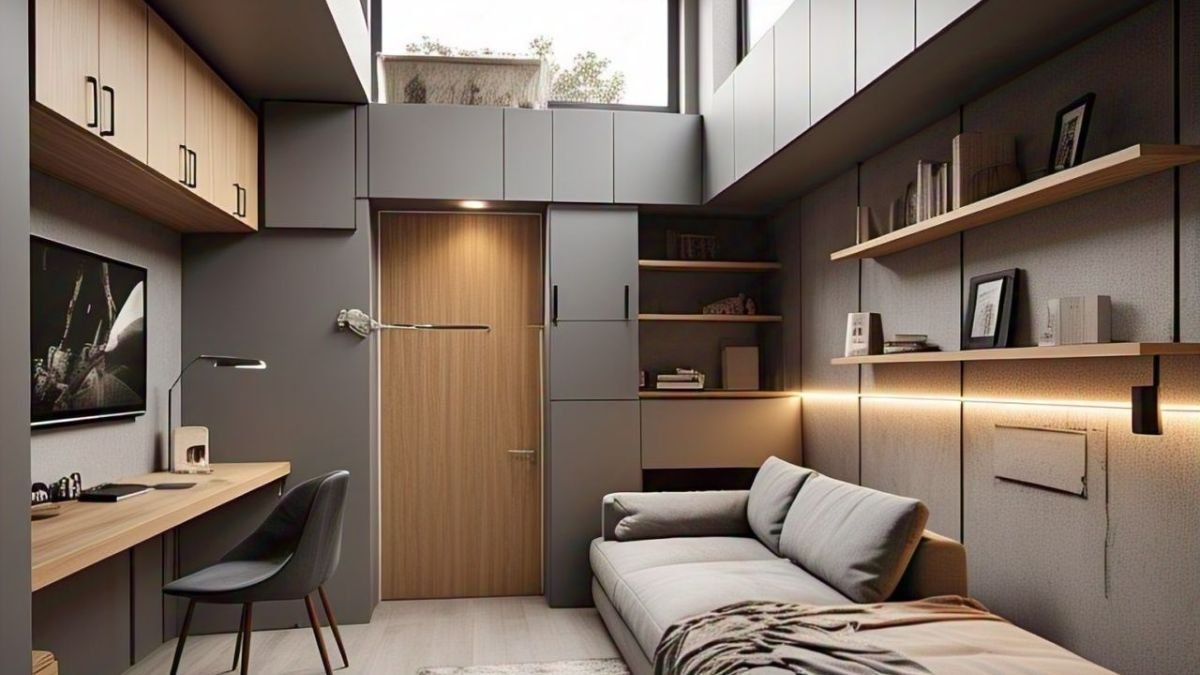Small living quarters don’t mean compromising comfort, design, or utility. Thoughtful design ideas allow small living spaces to be converted into clever, modern, and rather useful settings. Whether your space is a small house, a studio, or a tiny apartment, careful design decisions of paulconradarchitects.com can greatly affect how best to optimize each square foot. From innovative storage options to multifunctional furniture, these architectural strategies may transform little areas into vibrant and comfortable living quarters.
Multi-Functional Furniture: Maximizing Versatility
Including multifunctional furniture is one of the best approaches to maximize a limited area. Items with many uses enable you to maximize the available square footage. For example, a couch bed might serve as a daytime seat and change into a sleeping space at night. Likewise, foldable dining tables, wall-mounted desks, and storage ottomans enable a flexible living area that fits several demands without feeling crowded.
Architectural details like built-in furniture- Murphy beds or fold-down workstations improve space economy even further. These ideas let you keep an open and breezy feel while also giving the conveniences needed for daily life.
Vertical Storage: Utilizing Every Inch
Looking up can be the secret to maximizing storage and utility in limited floor space. Often disregarded areas are used in vertical storage solutions including hanging organizers, wall-mounted cabinets, and tall shelves. By installing floating shelves in living rooms, bathrooms, and kitchens, one may provide additional storage without sacrificing important floor space.
Using floor-to-ceiling bookshelves or built-in wardrobes that maximize the whole height of a room, architects also include vertical features in the design. These products preserve a neat, unspoiled appearance while helping to keep items orderly.
Open Concept Layouts: Creating an Illusion of Space
Small spaces find open concept designs to be a popular architectural option since they remove needless walls and obstacles, therefore extending the size and appeal of a house. Natural light may flow freely and openness is created by grouping the kitchen, dining, and living spaces into one open space.
Strategic zoning methods such as furniture placement or rug use allow architects to visually separate several regions within the same room. Sliding doors or glass barriers can also be used to keep separation when necessary while yet letting light and view pass through.
Smart Lighting: Enhancing Perception
The spaciousness of a room depends much on the lighting. Natural light architectural solutions include skylights, big windows, or strategically positioned mirrors that can brighten and enlarge a tiny area.
Combining ambient, task, and accent lighting, layered lighting helps a small area have depth and dimension. In bathrooms and kitchens, under-cabinet and recessed lighting helps to remove shadows and give the room more impression of size.
Minimalist Design: Less Is More
Simplicity in design may help a tiny space seem larger and more airy. To prevent visual congestion, architects may advise adopting a neutral color palette, simple furniture, and little décor. While multifunctional parts guarantee that every object serves a use, built-in storage options help to preserve a neat, orderly appearance.
Small spaces may seem modern, elegant, and inviting without feeling confined by stressing simplicity and utility.
Smart Home Technology: Enhancing Convenience
Including smart home technologies in little areas will greatly improve their comfort and use. Automated blinds, smart lighting systems, and voice-activated appliances let house owners easily regulate their surroundings. Compact smart appliances, foldable screens, and secret storage options are among space-saving devices that help maximize the accessible space while maintaining clutter-free conditions. Small living areas can be converted with smart technology into contemporary, efficient houses that provide convenience just a button away.
Architectural solutions for a small living are mostly about efficiency and imagination. Small spaces can be greatly impacted by including multifunctional furniture, maximizing vertical space, choosing open layouts, applying smart lighting approaches, and embracing simple design with paulconradarchitects.com . Even the smallest dwellings may offer comfort, design, and utility with the correct approach, therefore demonstrating that size does not define possibility.

